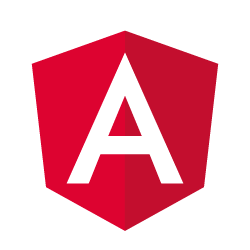JavaScript is a high-level interpreted language that’s supported by all modern web browsers and most websites. It’s one of the three core technologies used by the World Wide Web (WWW), along with CSS and HTML. JavaScript supports object-oriented programming styles and has an Application Programming Interface (API) that allows programmers to work with arrays, regular expressions and text. However, JavaScript depends on its host environment to perform I/O functions such as graphics, networking and storage. JavaScript Frameworks and Libraries allow programmers to develop applications more easily for web-centric technologies such as AJAX.
Many libraries of JavaScript routines are currently available. These libraries allow an application to detect its runtime environment in many cases. A JavaScript library that has full-stack capabilities and other properties may be classified as a framework. Software engineers further classify JavaScript frameworks into front-end and back-end solutions. Popular front-end JavaScript frameworks include AngularJS, ReactJS and Ember.js, while common back-end frameworks include Meteor.js and Express.js.
Front-End JavaScript Frameworks
Programmers use front-end JavaScript frameworks to make web applications interactive. These frameworks are especially useful for improving the capabilities of single-page applications.
AngularJS
AngularJS is a front-end framework that programmers primarily use to handle user interactions within the browser. It first reads the HTML page to obtain the embedded tag attributes, which it interprets as directives. AngularJS then uses those directives to represent the I/O components of the page with JavaScript variables. This capability allows the browser to update a web page by inserting new content based on requests for partial information, thus avoiding the need to request a new page from the server.
One of the most significant benefits to this approach is that AngularJS isn’t dependent upon a particular back end. It only deals with the API interface, so AngularJS works as long as the API handles its data requests properly. Developers can therefore change an application’s back end easily without modifying the front end. This capability is especially helpful when developing a mobile application for an existing web site.
Check out Airbrake's Angular Error Tracker
ReactJS
Facebook released ReactJS in 2013 and is already providing AngularJS with tough competition, although ReactJS is still more popular. ReactJS powers the user interface for both Facebook and Instagram, so it can build large, dynamic applications. It’s also the View component of the model-view-controller (MVC) software architecture.
ReactJS allows the programmer to develop a virtual Document Object Module (DOM), allowing the client and server sides to communicate more quickly. This capability is most useful for applications that require a powerful MVC View component without elaborate Model and Controller components. ReactJS is also beneficial for applications that need a View component for another front-end framework. Additional advantages of ReactJS include the resolution of some serious search engine optimization (SEO) problems.
Ember.js
Ember.js is an MVC framework that automatically updates a web page when its data changes. It also includes an engine that supports representational state transfer (RESTful) API web services. Ember.js is designed to create complex web applications without requiring developers to spend unnecessary time learning and implementing it. It resembles Rails, primarily because Yehuda Katz was a core member of both development teams.
Ember.js is intended to achieve the two-way binding of AngularJS and the server-side UI rendering of ReactJS. Ember.js works with Fastboot.js to render DOMs on the server side, which is similar to the approach that ReactJS uses for UI rendering. Ember.js is best suited for projects with tight budgets and timelines that allow developers to take full advantage of its multiple features. Ember.js isn’t as mature as the other two front-end JavaScript frameworks, although the development team is currently working to improve this shortcoming.
Check out Airbrake's Ember Error Tracker
Back-End JavaScript Frameworks
The primary function of back-end JavaScript frameworks is to provide RESTful API services. This requirement generally includes the majority of an app’s non-UI functions such as database modification, image storage and access authentication.
Meteor.js
Meteor.js is a full-stack development framework that was released by the Meteor development group in 2012. It provides complete functionality that allows developers to build web applications entirely in JavaScript from beginning to end. In addition to front-end UI rendering, Meteor.js offers back-end development capabilities such as database management and architectural structuring. It also provides a large set of modular libraries and packages that developers can use on demand. Furthermore, Meteor doesn’t require developers to invest their time in learning other languages since it only uses JavaScript.
The most significant consideration for using Meteor.js is the time needed to implement to implement it. Meteor.js is dependent upon MongoDB and uses global variables, both of which increase its development time. Furthermore, Meteor.js doesn’t use an npm-type package manager to manage its JavaScript runtime environment, making it better suited for projects that don’t need to be up and running quickly. However, these considerations become less significant over the lifetime of a long-term project.
Express.js
Express.js is a JavaScript back-end framework that’s designed to develop complete web applications and APIs. Express is the back-end component of the MEAN stack, which also includes MongoDB for the database, AngularJS for the front end and Node.js for the JavaScript runtime environment. The Express.js core has relatively minimal functionality compared to Meteor.js, although many additional functions are available via plugins. This approach means that Express.js doesn’t follow the usual MVC model for web app development since it's intended to create web applications quickly with minimal development effort.
Express.js is open-source software distributed under the MIT License, which generally means that it’s free to develop and use. However, StrongLoop acquired the rights to manage the Express.js project in June 2014. IBM acquired StrongLoop in 2015 and assigned the management of Express.js to the Node.js Foundation in 2016.
Check out Airbrake's Express Error Tracker
Conclusion
The number of developers who are using JavaScript to create structured approaches to web development is rapidly increasing. This growth is being driven by the essential need for a UI framework in modern web applications, especially in the cases of AngularJS and ReactJS. The most significant factors in choosing a JavaScript framework include the type of project and its requirements as well as the developer’s own preferences.







